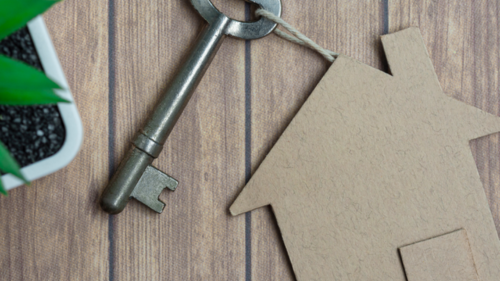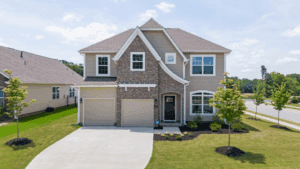The trend for sustainable housing here in Ontario has global origins. Habitat for Humanity reports that the 2030 Agenda for Sustainable Development aims to ensure that human settlements are safe, resilient, inclusive, and sustainable.
Investing in a sustainable home in Ontario is attractive for various reasons, such as the savings on Energy Star-certified appliances. Sustainable homes also attract premium prices in the real estate market as buyers become more environmentally conscious.
What is Sustainable Housing?
Sustainable housing seeks to minimize environmental impact and simultaneously take advantage of renewable resources. The developers who build and the architects who design these homes seek to make good homes using technologies and materials that reduce the carbon footprint.
Here are some of the features homebuyers should be looking for:
- Sustainable housing needs to incorporate passive design. This idea is about reducing a home’s ecological footprint by exploiting the landscape and local climate. One way to do that is to ensure the house is correctly orientated to the sun.
- Other materials that make a house sustainable include paints and finishes that are low in VOCs or contain only small amounts of volatile organic compounds.
- LED lighting is another important part of sustainable housing, and double-glazed windows are an effective way to improve their thermal efficiency.
Location is another feature because a property near schools, work, and amenities reduces one’s carbon footprint. Sustainable housing has other advantages that make these buildings even more attractive.
Benefits of Eco-Friendly Homes
These homes offer multiple benefits. Each of the following advantages makes an eco-friendly house an excellent investment.
They Are Energy Efficient
There are various features in one of these houses that lower your energy bills, including advanced insulation and solar panels. One of the more advanced innovations in the insulation field is Icynene. This spray foam is made from castor oil.
They Reduce Your Carbon Footprint
Swapping out old appliances for more energy-efficient ones and installing low-flow plumbing fixtures can make a big difference in the amount of energy you use. Geothermal heat is another method that you can look into to reduce your carbon footprint.
They Reduce Waste
Choosing to look for a home that has reclaimed wood and recycled steel can lower your carbon footprint by reducing the waste that winds up in landfills.
They Conserve Water
Looking for a place with low-flow shower heads doesn’t mean you need to sacrifice water pressure. Innovative aerating shower heads are specifically designed to supply a satisfying spray without compromising on that.
Now that you know what to look for in a sustainable home, you can use the following tips to find one.
How to Identify and Purchase Sustainable Properties
Make up a wish list of your green goals before you start looking for one of these properties. You’ll also need to work through the following checklist:
- You need to find properties that can support their claims to be sustainable with certifications like Energy Star and LEED. For example, LEED-certified homes, on average, use up to 30% less energy than their non-green counterparts.
- Smart home technologies are another box that you can check. Look for features like motion-activated lighting and programmable thermostats to better track your energy usage.
Finding an eco-friendly real estate agent is an excellent way to purchase one of these properties. You can begin by using the correct search listings, such as EcoProperty.ca.
Finally, staying current with the latest sustainable innovations can help you achieve a green home.
Future Trends in Sustainable Housing
Knowing what trends to look out for in 2024 will help you find a good deal where you can lower your carbon footprint.
Passive Solar Design
One of the upcoming trends will involve designs where windows, floors, and walls can collect and reflect, as well as distribute, solar heat in the winter and reject it during the summer months.
Unvented Attics
One of the other trends on the horizon is unvented attics. This can improve home HVAC performance and energy efficiency. This is just one of the innovations under the heading of passive ventilation. These passive strategies can regulate the temperature inside without excessively using air conditioners and furnaces.
More Green Building Materials
Another trend is to see more natural renewable resources used in building materials to lower greenhouse gas emissions. The idea is to replace materials that wind up in a landfill with ones that biodegrade and will return to the earth and or be recycled when their lifespan is finished.
Reusing More Existing Buildings
A future trend will be to adopt and repurpose existing buildings into shared living structures and apartment complexes. This is called adaptive reuse, and it prolongs the lifespan of any existing building. These types of housing projects that are adopted from existing structures help with social and cultural sustainability.
New Duct Systems
Conventional HVAC duct systems have been a problem because they leak. Some research shows that up to 93% of them have incorrect airflow. A plug-and-play system is one of the future trends that can solve this problem by easily snapping together and being airtight.
This innovation eliminates the need for duct sealing and significantly reduces recycling time for the entire system, rendering it more eco-friendly.
Looking for Sustainable Home Mortgages?
Mortgage Broker Store focuses on numerous mortgage-related products. One of our priorities is mortgages that don’t meet traditional lending institution requirements. Our team includes private lenders, brokers, and authorized mortgage agents. Let us help you prepare for and get a product that meets your requirements.
Email ron@mortgagebrokerstore.com or call 416-499-2122.



